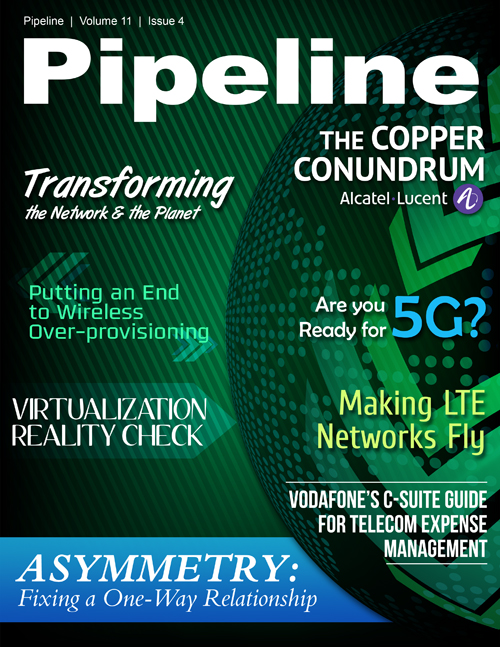Fixing a One-Way Relationship with Fiber: The Asymmetry Problem
Is fiber really the bee's knees?
There are many reasons why fiber-optic systems are revolutionizing telecommunications. Compared to conventional metal wire (copper wire), optical fibers are:
Potentially less expensive – Although there are other costs to consider, today, several miles of optical cable can be made cheaper than equivalent lengths of copper wire.
Thinner - Optical fibers can be drawn to smaller diameters than copper wire.
Higher carrying capacity - Because optical fibers are thinner than copper wires, more fibers can be bundled into a given-diameter cable than copper wires. This allows more phone lines to go over the same cable or more channels to come through the cable into your cable TV box.
Less signal degradation - The loss of signal in optical fiber is less than in copper wire.
Light signals - Unlike electrical signals in copper wires, light signals from one fiber do not interfere with those of other fibers in the same cable. This means clearer phone conversations or TV reception.
Low power - Because signals in optical fibers degrade less, lower-power transmitters can be used instead of the high-voltage electrical transmitters needed for copper wires. Again, this saves your provider and you money.
Digital signals - Optical fibers are ideally suited for carrying digital information, which is especially useful in computer networks.
Lightweight - An optical cable weighs less than a comparable copper wire cable. Fiber-optic cables take up less space in the ground.
Flexible - Because fiber optics are so flexible and can transmit and receive light, they are used in many flexible digital cameras. A recent advancement in “pushable fiber” takes advantage of this flexibility to lower the cost of a fiber installation.
Flavors of fiber
To cozy up to fiber, you must understand FTTx. There are several technologies that have emerged in the telecommunication sector with regard to fiber. Perhaps the most well-known is Fiber to the Home (FTTH). This technology replaces standard last-mile copper with fiber optics, which can carry high-speed, next-generation, integrated services directly to the home or building junction box.
Fiber-to-the-Premises (FTTP) or even Fiber-to-the-Building (FTTB) usually refers to bringing fiber optics directly to the community. A similar technology called Fiber-to-the-Node (FTTN) also brings the fibers to the community. There is also FTTC (Fiber to the Cabinet), which usually costs less compared to FTTH.
What about costs?
Many operators, mindful of the short-term desires of their shareholders, would like to implement cheaper upgrades that provide more instant gratification. Fiber isn’t the bank-breaker it used to be, however, and it offers innate long-term cost savings as well.
A study by Taylor Reynolds of the Organisation for Economic Cooperation and development (OECD) suggests that cost savings of between 0.5 per cent and 1.5 per cent over 10 years in each of the electricity, transport, energy, and health-care sectors resulting directly from broadband "would justify the cost of building a national point-to-point FTTH network". However, he also noted that some of these public benefits would only be captured if everyone has access to the same services.
The demand for fiber is growing
More than 100 million homes already subscribe to a fibre-optic broadband connection – roughly equivalent to about one out of every 20 homes on the planet. The greatest concentration of FTTH subscribers can be found in the Asia Pacific region, where FTTH subscribers numbered 79 million by the end of 2012. In Japan, where FTTH deployment started over a decade ago, the majority of Japanese broadband subscribers use FTTH. In the United States, a nation of about 118 million households, over 11 million of them already subscribe to FTTH-based services. Russia alone had 8.9 million FTTH subscribers at the last count, even though large-scale deployment only started recently (nearly three million were new subscribers in 2012). These statistics clearly demonstrate that, where FTTH is available, people will connect to it.



















